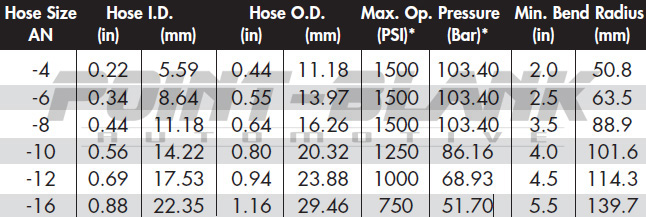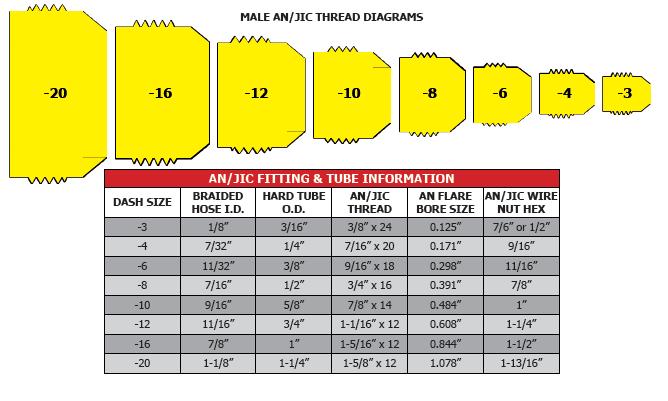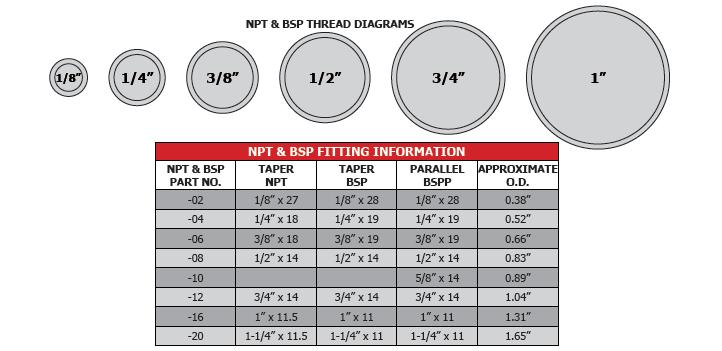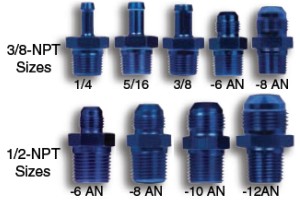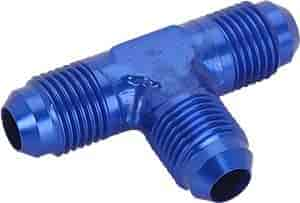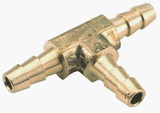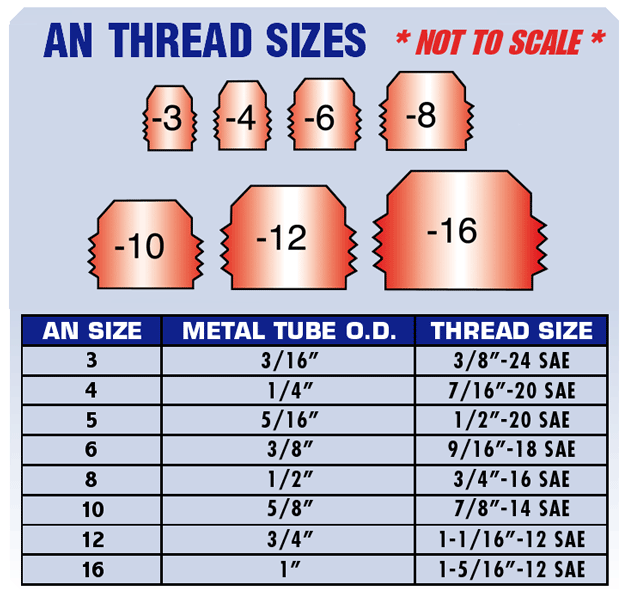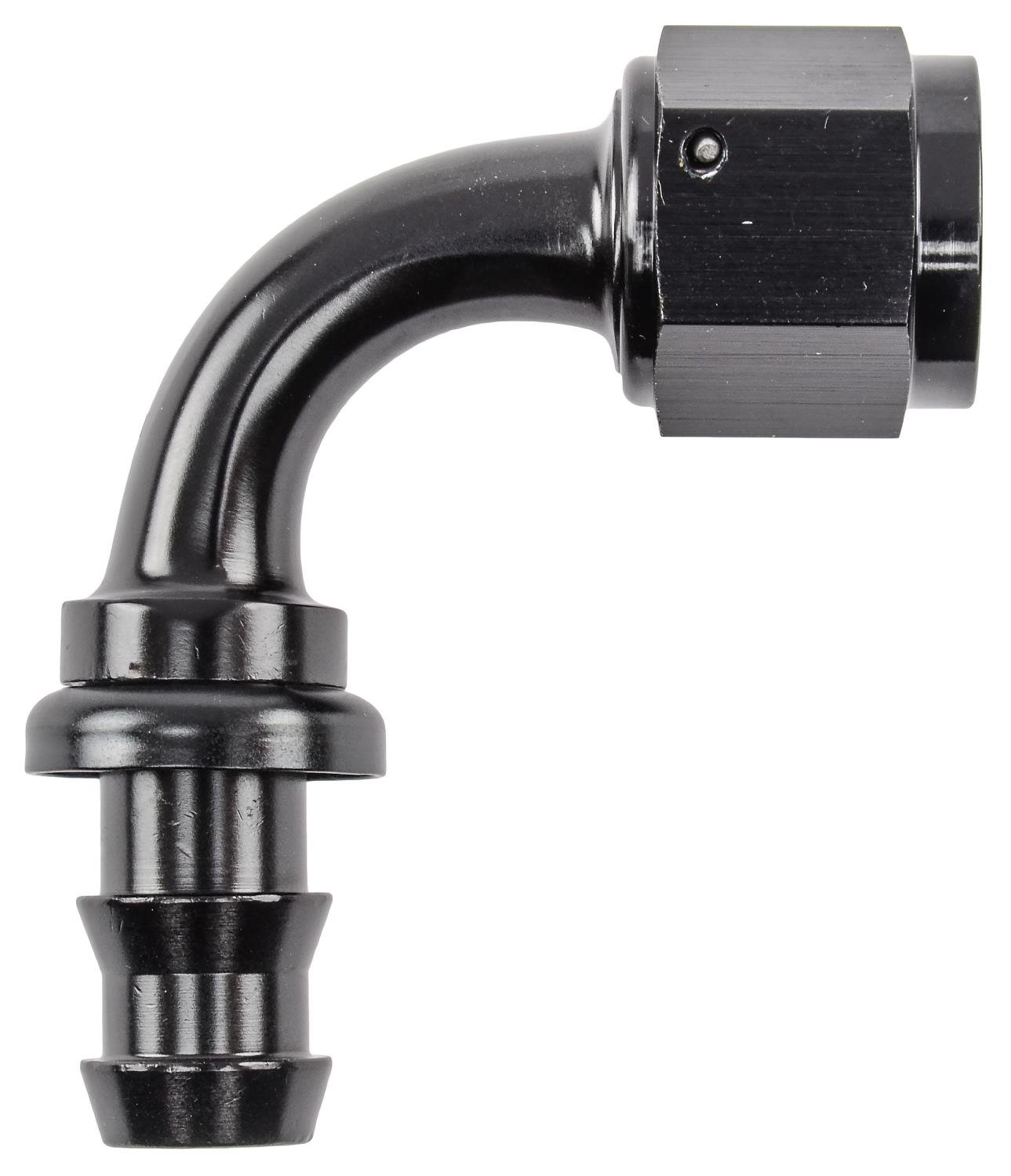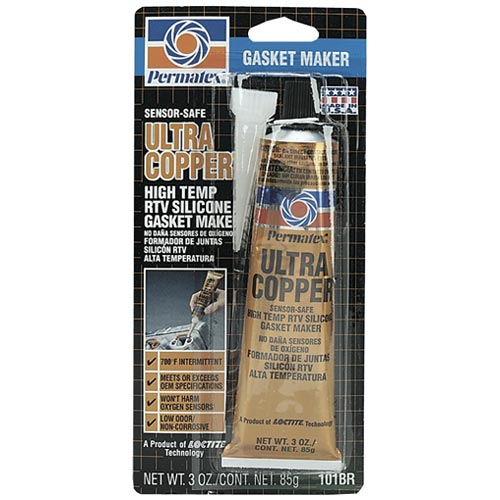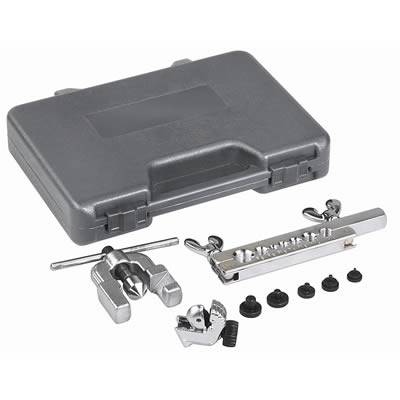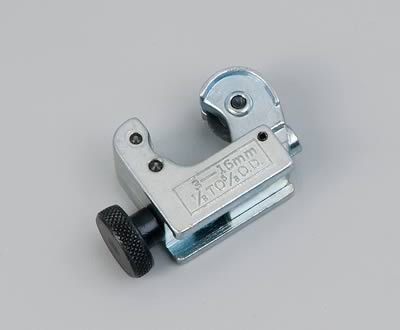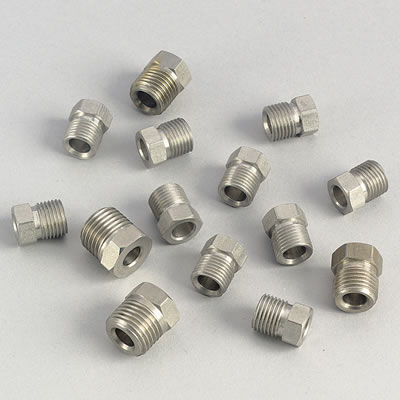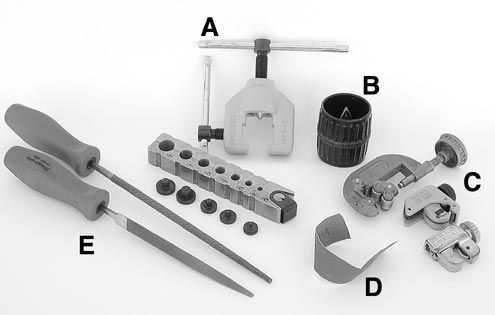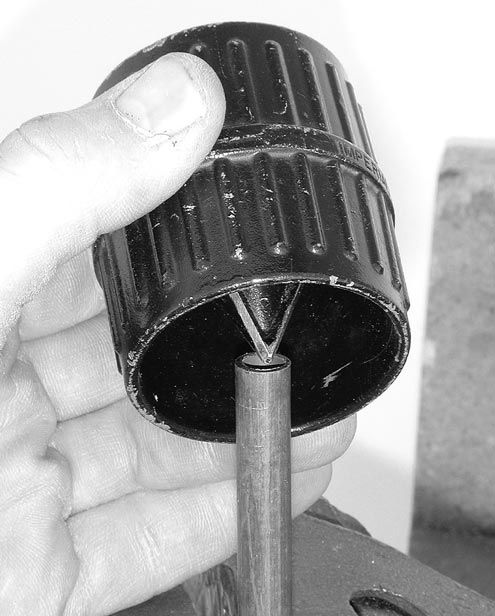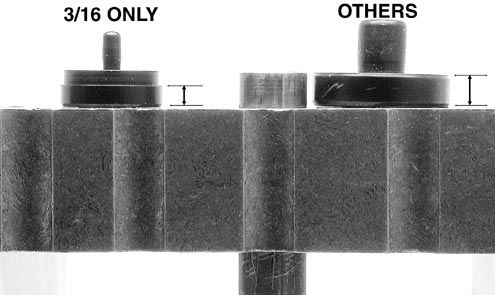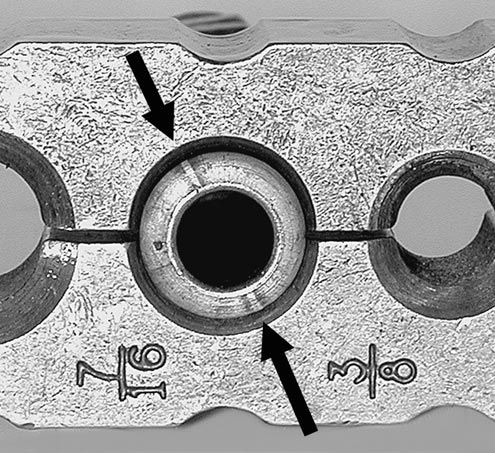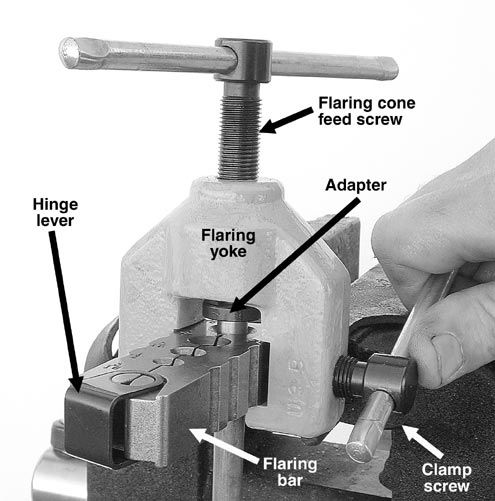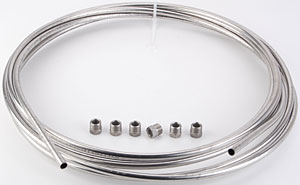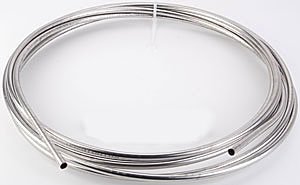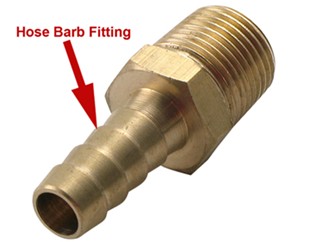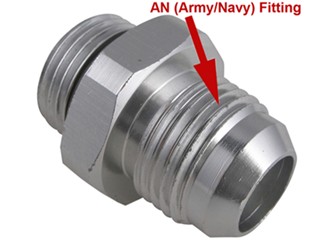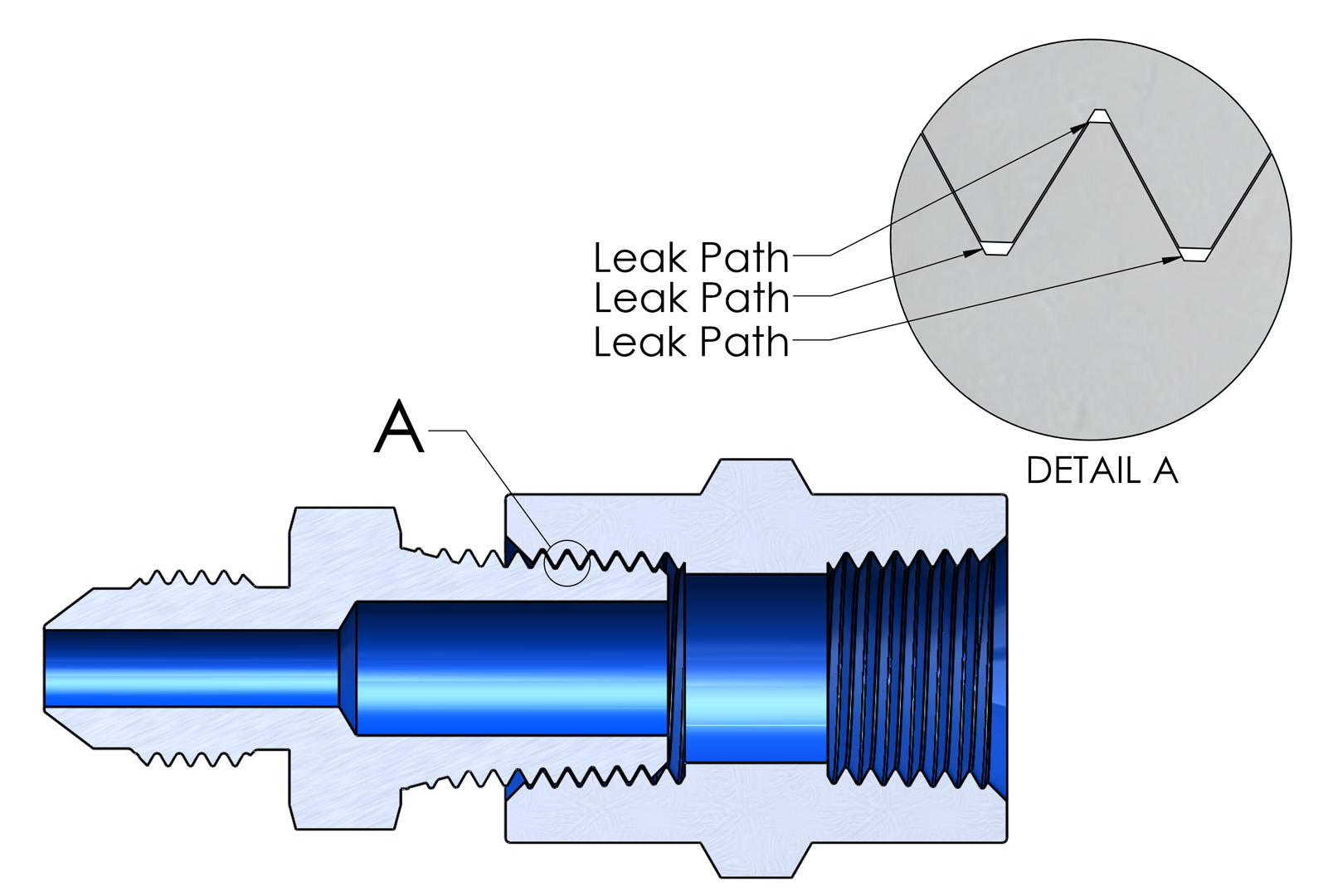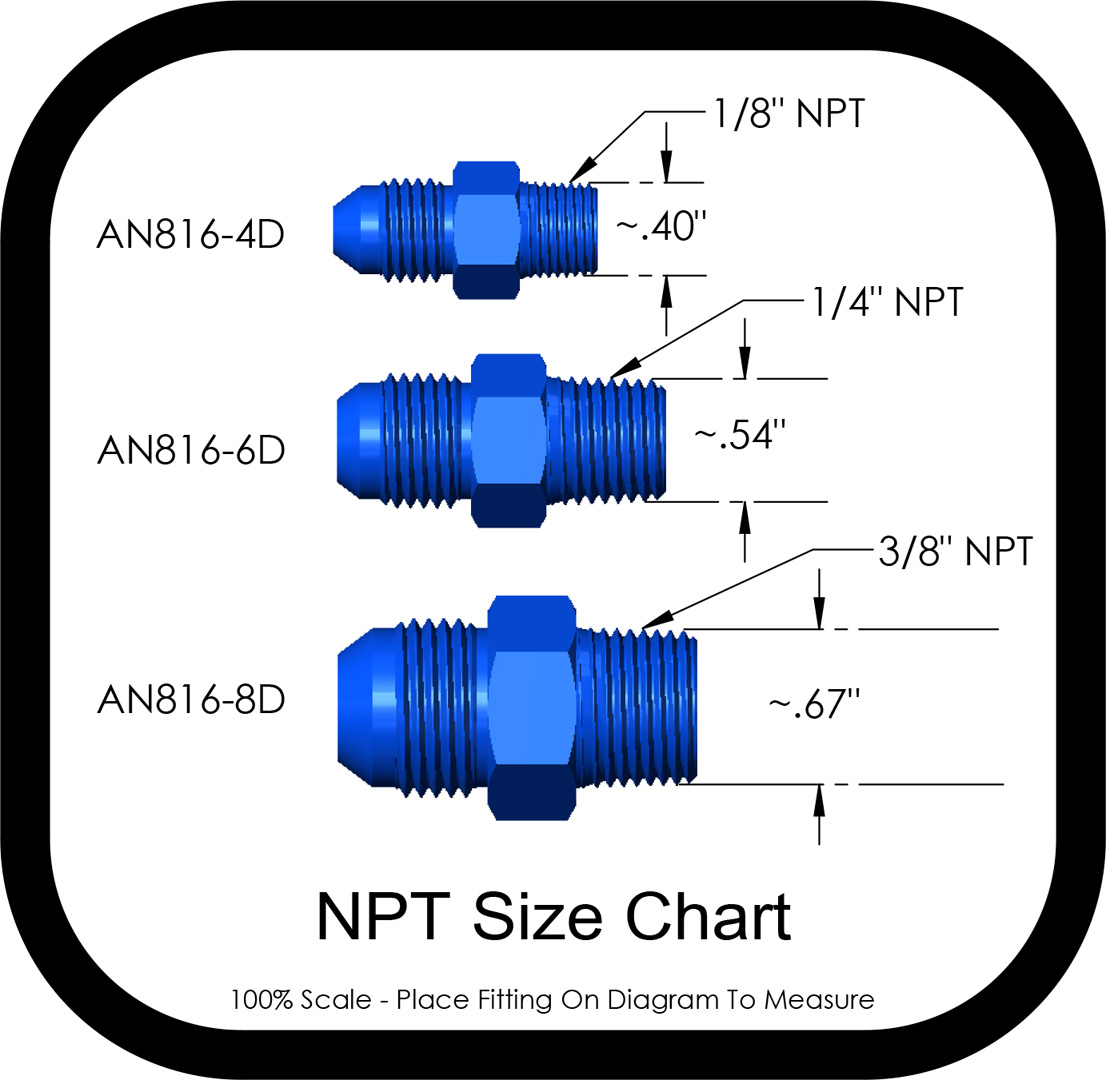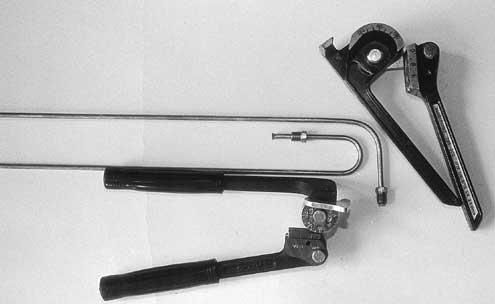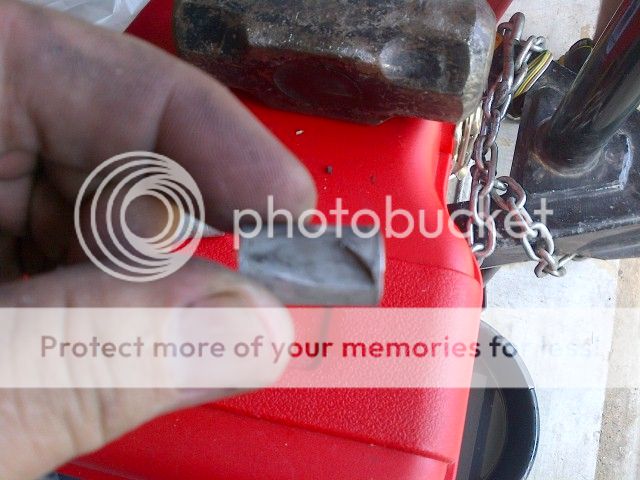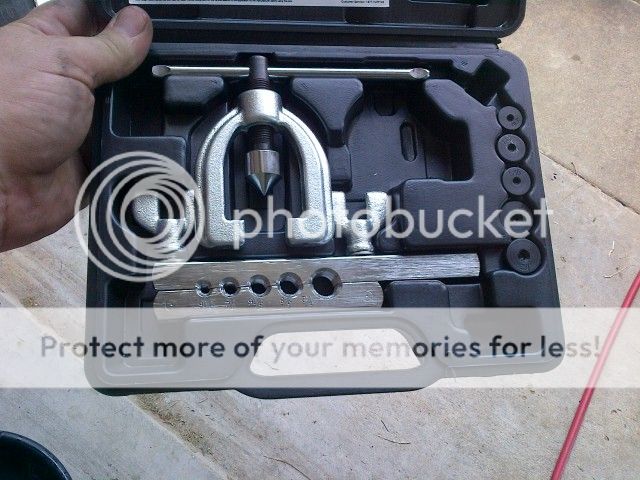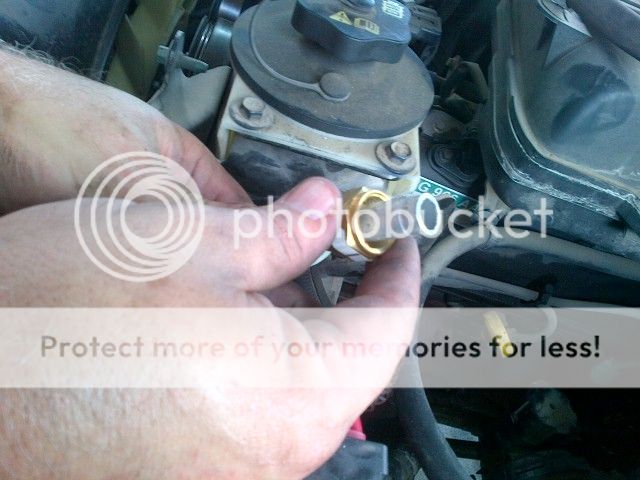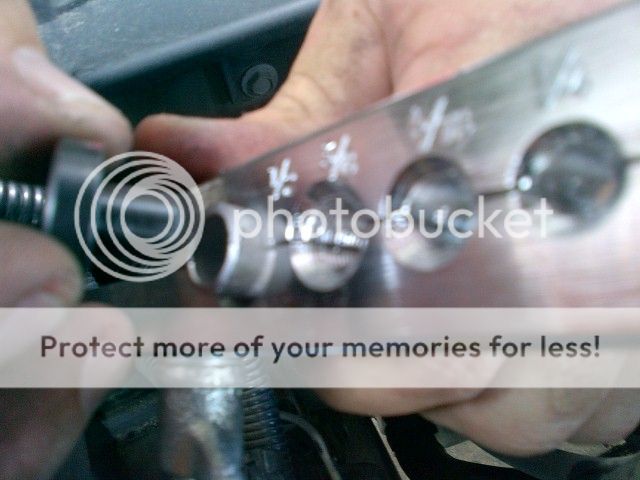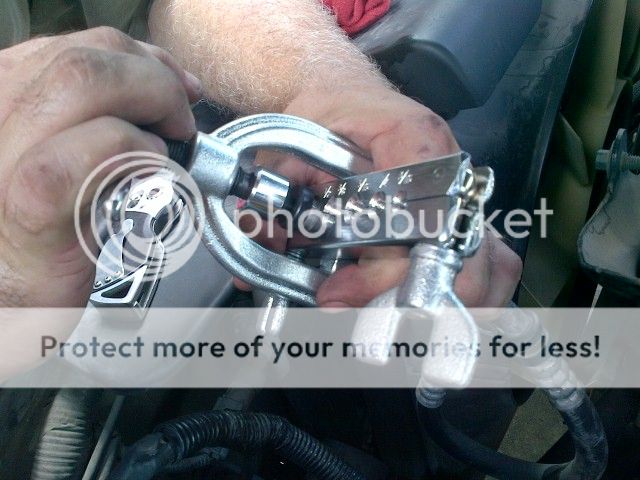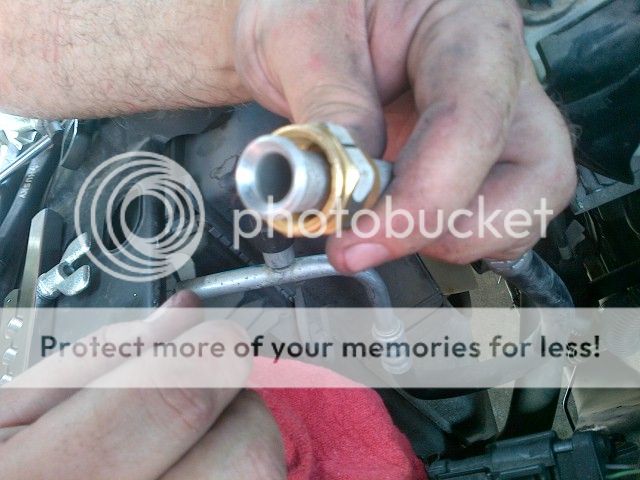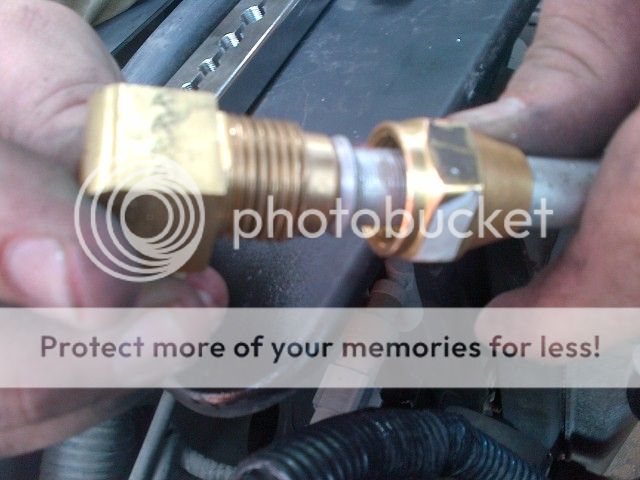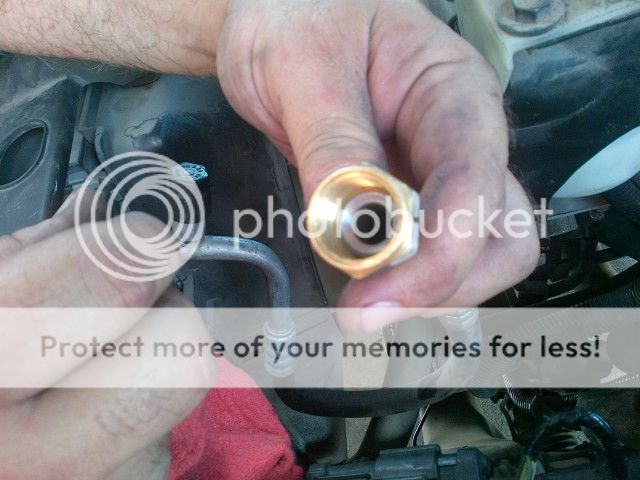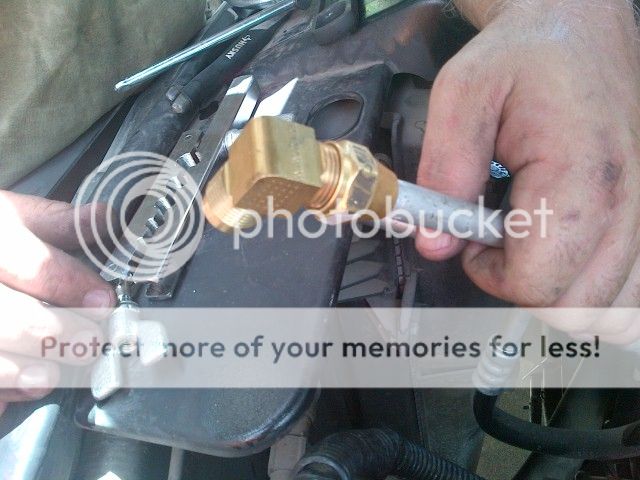Here is some tools that might help, but before you go spending money on flare tools for hard fuel lines ,you might want to know that most hydraulic supply stores can fabricate really nice fuel, brake or coolant and transmission fluid hard lines or if needed flexible type hydraulic lines dependent on the application,with AN connectors at very reasonable prices if you measure things carefully. and hard lines being far less flexible are slightly more prone to vibration damage if subjected to recurring movement. if your only doing brake lines once it makes little sense to buy a $200-$300 flare & bending tool, but if you do that type of work a couple times a year its a good investment in my opinion
obviously your needs and budget will have a huge effect on what tools you select, but the cost of a really good tool cost spread over decades of its use is peanuts compared to the frustration and wasted tubing of using crappy $30 flare tools
I don,t use aluminum, fuel line, because it fatigues quickly and it frequently rated under 40 psi., the best line is stainless steel hydraulic line you can usually get from a local hydraulic hose supply manufacturer or repair shop, its generally rated at 1000 psi or higher in 1/2" size I GENERALLY RUN ON PERFORMANCE CAR APPLICATIONS, shop carefully some places price that line like its made of gold, most are far more reasonable.
http://www.amazon.com/Ti-Industries--Ca ... aulic+line
http://www.hydraulic-supply.com/html/pr ... tubing.htm
http://www.copper.org/applications/auto ... brake.html
http://store.fedhillusa.com/cnf6.aspx
http://www.discounthydraulichose.com/Hy ... tm?Click=3
http://store.fedhillusa.com/cnf8.aspx
http://www.boydwelding.com/?gclid=CIuGs ... 7Aod-BAANg
http://shop.hoseandfittings.com/catalog ... S-304.html
use steel hydraulic/fuel line its rated well over 1000 psi, it comes in 25 ft lengths in either 3/8" (AN#6) or 1/2" (AN#8)
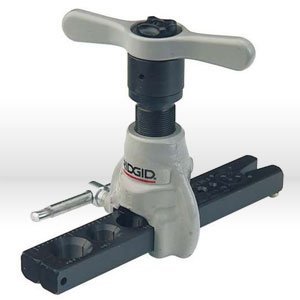
http://www.amazon.com/gp/product/B001B1 ... 00_s00_i00
be aware youll need a tubing cutter and flare tool if you work with hard fuel line
http://www.inlinetube.com/#!straight-length-tubing/c1lyw
http://www.summitracing.com/parts/KTI-70081/?rtype=10
http://www.carcraft.com/howto/50919/index.html
http://www.toolbarn.com/ridgid-33927.html?ref=base
http://www.atlinc.com/racing.html
http://www.eastwood.com/professional-br ... -tool.html
90/10 copper tubing used for brake lines is NOT the same thing as most hard ware store copper plumbing tubing your going to commonly find locally
http://www.rodandcustommagazine.com/tec ... d_flaring/
this is the tool a friend has and if I didn,t have ready access, Id buy one as soon as finances allow, yes Im addicted to buying good tools and Id buy one in an instant if I used it more often,but thinking back I doubt Ive used it more than 3 times in the last 6 -7 years, so while its available for use for free Ill spend my very limited cash else-ware
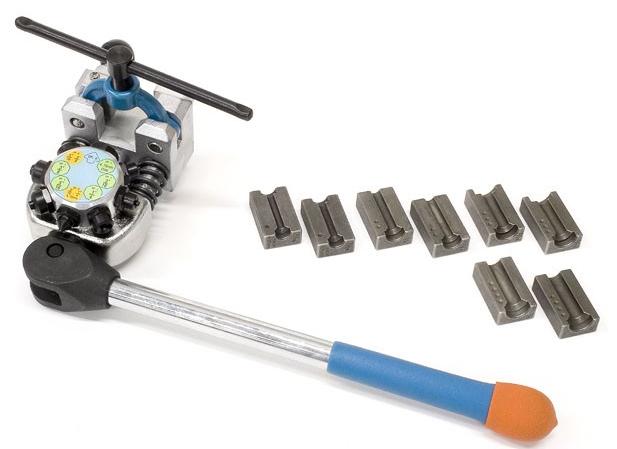

http://www.toolfetch.com/Category/Autom ... S71300.htm
http://www.toolfetch.com/tube-flaring-tools.shtml
viewtopic.php?f=59&t=807&p=8498&hilit=rusted#p8498
http://horsepowerperformance.com/c-7774 ... l-die.html
http://www.russellperformance.com/misc/tech/main.shtml
http://www.mastercool.com/pages/flaring_tools.html
http://www.autorepairmanuals.biz/site/573683/product/MTC71400
http://www.robbmcperformance.com/produc ... msend.html
http://forum.grumpysperformance.com/viewtopic.php?f=55&t=211
viewtopic.php?f=55&t=635
BTW alcohol in fuel tends to cause aluminum to oxidize over time
http://video.foxbusiness.com/v/2000862202001/
Ive seldom used fittings and lines that small,on anything I intended to race,seriously (usually use 8AN) so I called the tech guys at EDELBROCK and at RUSSELL, both tech guys felt that if everything was optimal you could probably get to 600 hp with the correct pumps, and ,filters and fuel pressure regulators

http://garage.grumpysperformance.com/index.php?threads/brake-and-fuel-line-flaring.11236/#post-50743
http://www.thetoolwarehouse.net/nsearch ... ords=71475
http://www.gre6.com/ansize
obviously your needs and budget will have a huge effect on what tools you select, but the cost of a really good tool cost spread over decades of its use is peanuts compared to the frustration and wasted tubing of using crappy $30 flare tools
I don,t use aluminum, fuel line, because it fatigues quickly and it frequently rated under 40 psi., the best line is stainless steel hydraulic line you can usually get from a local hydraulic hose supply manufacturer or repair shop, its generally rated at 1000 psi or higher in 1/2" size I GENERALLY RUN ON PERFORMANCE CAR APPLICATIONS, shop carefully some places price that line like its made of gold, most are far more reasonable.
http://www.hydraulic-supply.com/html/pr ... tubing.htm
http://www.copper.org/applications/auto ... brake.html
http://store.fedhillusa.com/cnf6.aspx
http://www.discounthydraulichose.com/Hy ... tm?Click=3
http://store.fedhillusa.com/cnf8.aspx
http://www.boydwelding.com/?gclid=CIuGs ... 7Aod-BAANg
http://shop.hoseandfittings.com/catalog ... S-304.html
use steel hydraulic/fuel line its rated well over 1000 psi, it comes in 25 ft lengths in either 3/8" (AN#6) or 1/2" (AN#8)

http://www.amazon.com/gp/product/B001B1 ... 00_s00_i00
be aware youll need a tubing cutter and flare tool if you work with hard fuel line
http://www.inlinetube.com/#!straight-length-tubing/c1lyw
http://www.summitracing.com/parts/KTI-70081/?rtype=10
http://www.carcraft.com/howto/50919/index.html
http://www.toolbarn.com/ridgid-33927.html?ref=base
http://www.atlinc.com/racing.html
http://www.eastwood.com/professional-br ... -tool.html
90/10 copper tubing used for brake lines is NOT the same thing as most hard ware store copper plumbing tubing your going to commonly find locally
http://www.rodandcustommagazine.com/tec ... d_flaring/
this is the tool a friend has and if I didn,t have ready access, Id buy one as soon as finances allow, yes Im addicted to buying good tools and Id buy one in an instant if I used it more often,but thinking back I doubt Ive used it more than 3 times in the last 6 -7 years, so while its available for use for free Ill spend my very limited cash else-ware


http://www.toolfetch.com/Category/Autom ... S71300.htm
http://www.toolfetch.com/tube-flaring-tools.shtml
viewtopic.php?f=59&t=807&p=8498&hilit=rusted#p8498
http://horsepowerperformance.com/c-7774 ... l-die.html
http://www.russellperformance.com/misc/tech/main.shtml
http://www.mastercool.com/pages/flaring_tools.html
http://www.autorepairmanuals.biz/site/573683/product/MTC71400
http://www.robbmcperformance.com/produc ... msend.html
http://forum.grumpysperformance.com/viewtopic.php?f=55&t=211
viewtopic.php?f=55&t=635
BTW alcohol in fuel tends to cause aluminum to oxidize over time
http://video.foxbusiness.com/v/2000862202001/
"Grumpy, theoretically, what is the maximum horse power that a -6AN fuel line can support? "
Meaning -6 all the way from the tank to the pump and from the pump to regulator, regulator to carb. Is there a point at which the -6AN fuel line will not support XX HP, regardless of the pump used?
Thanks,
Phil
Ive seldom used fittings and lines that small,on anything I intended to race,seriously (usually use 8AN) so I called the tech guys at EDELBROCK and at RUSSELL, both tech guys felt that if everything was optimal you could probably get to 600 hp with the correct pumps, and ,filters and fuel pressure regulators

http://garage.grumpysperformance.com/index.php?threads/brake-and-fuel-line-flaring.11236/#post-50743
http://www.thetoolwarehouse.net/nsearch ... ords=71475
http://www.gre6.com/ansize
Last edited by a moderator:

